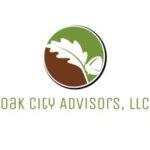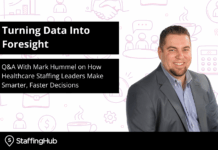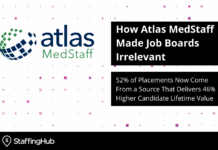
By Dan Mastropolo, President of Oak City Advisors, Technology Leadership Expert in Staffing
The staffing industry is evolving faster than ever before, with technology serving as the primary driver of this transformation. Firms that embrace innovative tools are pulling ahead in efficiency, quality of hires, and client satisfaction. In contrast, those that resist these changes risk falling behind. Drawing on insights from Staffing Industry Analysts (SIA), the American Staffing Association (ASA), and recent market data, here are the trends — and the numbers — that will define staffing in 2025.
1. Artificial intelligence: from niche tool to essential partner
AI adoption is growing rapidly in the staffing industry. According to SIA, firms using AI for tasks like résumé screening, predictive hiring, and engagement have seen a 30% improvement in time-to-hire compared to firms relying on traditional processes. Tools like Sense and HireVue are streamlining operations, allowing recruiters to evaluate candidates faster and with greater accuracy.
In a world where candidates want to be engaged actively by the firms they work with, instant communication is key, but maintaining the human touch is even more important. Candidates don’t want to feel like they are communicating with a bot, and ensuring compliance standards within your AI solutions is critical.
Research also shows that AI-enabled firms report 50% higher placement quality, with candidates better matching job requirements and organizational culture. For firms still hesitant to adopt AI, the gap in efficiency and client satisfaction is widening.
2. Mastering the maze of compliance
Compliance continues to be a critical differentiator. Non-compliance with federal, state, and local regulations can lead to penalties and lost clients, yet many firms still rely on outdated manual processes. According to ASA, staffing firms that utilize compliance automation tools like AviontéBOLD or Compli HR reduce regulatory errors by up to 65%, saving an average of $200,000 annually in penalties and operational costs.
With pay transparency and compliance aimed at ensuring equal pay opportunities between “temporary employees” vs “full-time” employees, tools that offer real-time compliance updates are essential to staying ahead of the competition. Companies like Timerack are starting to disrupt the time and attendance space in staffing by focusing on the Middle Office and ensuring rules and compliance engines can meet the evolving needs of the firms.
3. Supercharging candidate sourcing and engagement through tech
Advanced sourcing tools are rapidly changing how firms attract and engage talent. Studies show that firms using referral platforms like Staffing Referrals or AI-driven sourcing tools such Glyde are filling roles 40% faster than firms relying solely on job boards.
Additionally, programmatic job advertising tools like Appcast deliver an average 4x return on investment, ensuring ad budgets are spent efficiently. According to SIA, firms that integrate sourcing automation into their workflows see 20% higher applicant volume and experience a 15% reduction in cost-per-hire. This is critical for firms dealing with high-volume and support total talent management eco-systems. Being able to attract, engage, and hire efficiently is critical to UI/UX in firms’ tech stacks, and it helps build community within a firm’s database. It’s one thing to have a database, it’s another to have an engaged workforce.
4. Economic uncertainty breeds innovation
Uncertainty in the labor market is pushing staffing firms to innovate. Workforce management platforms like SAP Fieldglass are helping firms build more resilient and flexible workforce models. SIA data shows that firms using workforce management platforms report a 25% increase in client retention, as these tools enable more responsive and adaptable staffing solutions.
Predictive analytics tools like TalentNeuron also play a crucial role, with firms using these tools able to anticipate hiring needs and market shifts more effectively. This proactive approach results in a 30% improvement in forecast accuracy, helping firms remain competitive in volatile economic conditions.
5. Recruiters as business leaders
Automation tools are transforming recruiters into strategic business leaders. According to ASA, firms leveraging scheduling and communication tools like Calendly, Paradox’s Olivia, and TextUs have seen a 25% improvement in recruiter productivity, allowing them to focus on high-value activities like relationship building and strategic planning.
More impressively, firms that equip recruiters with modern technology report a 20% higher client satisfaction rate. These tools free recruiters from repetitive administrative tasks, enabling them to deliver greater value to both clients and candidates.
Key hiring statistics: the technology advantage
- The average time-to-hire for firms using advanced staffing technology is 21 days, compared to 34 days for firms relying on manual processes (SIA, 2024).
- Firms using AI-driven sourcing tools experience a 50% reduction in time spent on résumé screening.
- Automated referral platforms generate 38% more high-quality candidates, with referred candidates being hired 55% faster than those from other sources (ASA, 2024).
Final thoughts
The staffing industry is at a crossroads. Firms that adopt advanced technologies — whether for sourcing, compliance, or recruiter productivity — are consistently outperforming their competitors. The data is clear: technology drives efficiency, reduces costs, and improves client and candidate outcomes.
For me, 2025 isn’t just about following trends; it’s about leveraging them to create meaningful, measurable results. Staffing firms that embrace AI, compliance automation, and sourcing innovations will thrive, while those that resist risk being left behind. The choice is clear: adapt, innovate, and lead — or fall to the back of the pack.
 Dan Mastropolo, Owner of Oak City Advisors LLC , has spent over a decade committed to the Staffing Industry. Dan started his career in Staffing at Randstad as a Staffing Consultant in 2012, and over 4 years quickly grew to a top VP in the company for general staffing. In 2016, Dan started his own firm and since has started and exited multiple light industrial staffing companies.
Dan Mastropolo, Owner of Oak City Advisors LLC , has spent over a decade committed to the Staffing Industry. Dan started his career in Staffing at Randstad as a Staffing Consultant in 2012, and over 4 years quickly grew to a top VP in the company for general staffing. In 2016, Dan started his own firm and since has started and exited multiple light industrial staffing companies.
In 2018 Dan partnered with Vensure HR and Lightsource HR to establish a staffing EOR and Staffing Alliance program for the company. Dan had oversight of 500 staffing companies where he helped manage 3rd party integrations, building strategic alliances with vendors/partners, and helping the company grow to over a $1B in staffing wages processed in payroll monthly.
 In 2020 Dan started Oak City Advisors to help staffing industry owners adapt to Cloud Server architecture and aid in developing 3rd party automations. Oak City Advisors currently acts as a Fractional CTO to over $1B in Staffing Revenue, in the clients they support. Having spent most of his career in building innovative and high-tech enabled staffing companies, Dan has excelled in his career to being recognized as a top 100 HR professional in the staffing industry. Dan continues to excel in the areas of Executive Strategy, Sales, & technology stack configurations and automations within the staffing industry and has worked with Avionte’s API and 3rd party partners for over 8 years. Dan is also currently on the Board of Time Rack and is an advisor to Staffing Referrals and Tacit.
In 2020 Dan started Oak City Advisors to help staffing industry owners adapt to Cloud Server architecture and aid in developing 3rd party automations. Oak City Advisors currently acts as a Fractional CTO to over $1B in Staffing Revenue, in the clients they support. Having spent most of his career in building innovative and high-tech enabled staffing companies, Dan has excelled in his career to being recognized as a top 100 HR professional in the staffing industry. Dan continues to excel in the areas of Executive Strategy, Sales, & technology stack configurations and automations within the staffing industry and has worked with Avionte’s API and 3rd party partners for over 8 years. Dan is also currently on the Board of Time Rack and is an advisor to Staffing Referrals and Tacit.





